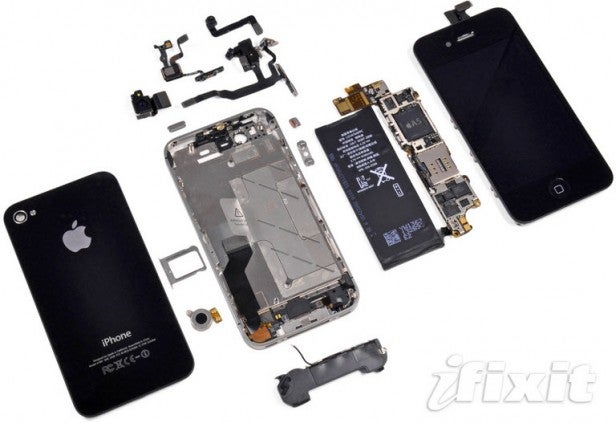History Repeating: The Misguided Smartphone Spec War

So let’s break this down and find out what’s going on.
The dual core 800MHz iPhone 4S uses a vast array of components to make up its chipset. According to iFixit these including Qualcomm’s RTR8605 multi-band/mode RF transceiver, Skyworks’ 77464-20 load-insensitive power amplifier (LIPA) module for WCDMA applications, Avago’s ACPM-7181 power amplifier plus TriQuint’s TQM9M9030 multi-mode quad-band power amplifier module and TQM66052 PA-duplexer module. How effectively these are combined with one another will all have an impact on performance. That’s not just operational speed, but how well everything works from battery efficiency to call quality. 
Next we have the SGX 543MP2 GPU. Apple claims this gives the iPhone 4S up to 7x the graphical performance of the iPhone 4 and AnandTech tests show it doubles the graphics performance of the 1.2GHz dual core equipped Samsung Galaxy S2. Despite this the iPhone 4S has 512MB RAM whereas most dual core Android phones (including the S2) use 1GB. The lesson here is hardware is only as fast as the bottleneck caused by its slowest component, so it appears Apple has done a better job of balancing the components than its rivals. Or has it?
Here things hit another serious road bump: software. Right now all today’s flagship Android phones use a version of Android 2.x which isn’t fully optimised for dual core processors. In fact testing shows on this platform dual core processors are barely any faster than a single core in many scenarios. Android 2.x also lacks full GPU acceleration and consequently all handsets using it would appear slower in operation than the iPhone 4S because iOS 5 is fully GPU accelerated and optimised for dual core. 
This will change with the release of Android 4.0 ‘Ice Cream Sandwich‘ and owners of Android 2.x dual core smartphones who are lucky enough to get this upgrade should see huge performance gains. Then again how these improvements will be affected by the inevitable plague of badly coded, inefficient Android skins is unknown and Android 4.0 itself will likely have higher specification requirements.
All of which is to stress: smartphone spec comparisons are largely pointless. They may have some benefit when comparing phones using the same operating system, but even then there are enough discrepancies in their chipsets and countless differences in their software versions, and manufacturer customisations introduce more variations than can practically be accounted for. The same goes for tablets.
Ultimately the message is simple. Don’t judge a handset by its specs alone. Moreover, enjoy the device you have chosen and stop worrying about everyone else…

